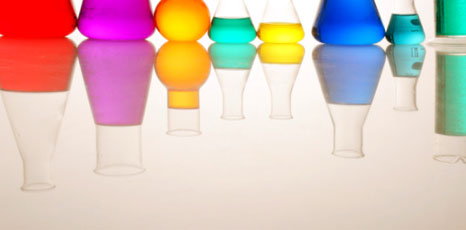Innovative drug manufacturing method

22.11.2012
At CRS4 the multi-disciplinary research centre in the field of ICTs based at the Sardinia Technology Park , a team of 3 researchers is engaged in a major computational chemistry project. Enrico Pieroni, Maria Valentini and Detlef Hoffman have been working on this project for the past seven years. Their professional history is intertwined with that of CRS4, as they have been working at the Centre since its inception in the 1990s. Enrico and Maria are both physics graduates who then specialised in biology. For this project they have worked on code development. Detlef is a theoretical chemist, with about 20 years' work in computational chemistry under his belt.
We met them in their office, at the Pula campus of the Science and Technology Park of Sardinia, to find out more about their research and why it has lately made headlines. With a great deal of patience and using whiteboards, markers and practical examples, they gave us a beginner's guide to the principles of computational chemistry and helped us see why the method they have come up with has sent ripples through the science community.
They have developed a method to identify, via a formula designed by them, similarity indices among compounds under development and known compounds found in the databases created by the scientific and industrial community over the past two decades. This highly innovative process slashes the time and cost of research to develop new pharmaceuticals and cosmetics.
The basic principle is quite simple: the data stored in world databases, which are mostly open access, can be used to identify similarities between new and existing compounds, making it possible to cut down the trial phase. Only today is this highly innovative project possible, thanks to the exponential growth of databases and the availability of increasingly powerful computers enabling faster and more efficient data extraction and processing. This method relies on the latest artificial intelligence and data mining techniques.
Currently, whenever a new medicinal drug is developed, the laws of theoretical chemistry are applied to identify millions of compounds possessing the specific qualities sought. These molecules must then be synthesised and tested in the lab. This process is highly time-consuming and expensive. The method on which Enrico, Maria and Detlef are working speeds up the last phase, i.e. the experimental phase. This because by identifying similarity indices between new compounds and known compounds it is possible to identify aspects such as toxicity, even without trials.
The idea is clearly quite innovative, and when the three researchers saw the potential of their research they felt it was well worth patenting. Thus it was that in late August they filed a patenting application under the title "Method of determining values of molecular properties". They are currently waiting for the application to be processed and the patent granted.
CRS4 has selected the research done by Enrico, Maria and Detlef as a key component of its patent portfolio development policy. The ultimate target is to establish ever closer ties with companies, reaching potential investors interested in exploiting the patents.
We met them in their office, at the Pula campus of the Science and Technology Park of Sardinia, to find out more about their research and why it has lately made headlines. With a great deal of patience and using whiteboards, markers and practical examples, they gave us a beginner's guide to the principles of computational chemistry and helped us see why the method they have come up with has sent ripples through the science community.
They have developed a method to identify, via a formula designed by them, similarity indices among compounds under development and known compounds found in the databases created by the scientific and industrial community over the past two decades. This highly innovative process slashes the time and cost of research to develop new pharmaceuticals and cosmetics.
The basic principle is quite simple: the data stored in world databases, which are mostly open access, can be used to identify similarities between new and existing compounds, making it possible to cut down the trial phase. Only today is this highly innovative project possible, thanks to the exponential growth of databases and the availability of increasingly powerful computers enabling faster and more efficient data extraction and processing. This method relies on the latest artificial intelligence and data mining techniques.
Currently, whenever a new medicinal drug is developed, the laws of theoretical chemistry are applied to identify millions of compounds possessing the specific qualities sought. These molecules must then be synthesised and tested in the lab. This process is highly time-consuming and expensive. The method on which Enrico, Maria and Detlef are working speeds up the last phase, i.e. the experimental phase. This because by identifying similarity indices between new compounds and known compounds it is possible to identify aspects such as toxicity, even without trials.
The idea is clearly quite innovative, and when the three researchers saw the potential of their research they felt it was well worth patenting. Thus it was that in late August they filed a patenting application under the title "Method of determining values of molecular properties". They are currently waiting for the application to be processed and the patent granted.
CRS4 has selected the research done by Enrico, Maria and Detlef as a key component of its patent portfolio development policy. The ultimate target is to establish ever closer ties with companies, reaching potential investors interested in exploiting the patents.








